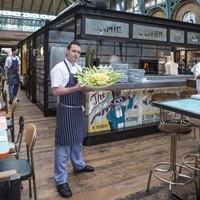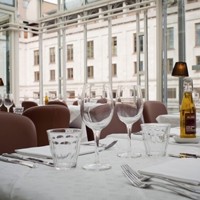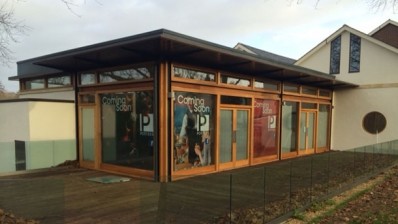The new Soho? Covent Garden’s restaurant resurgence explained
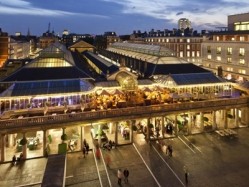
Industry insiders are now mentioning Covent Garden in the same breath as Mayfair or Soho - so what has lifted the neighbourhood from tourist backwater to foodie haven and what do restaurateurs really think of the district’s resurgence?
The three P's
Beverley Churchill, marketing and communications director for Capital & Counties, which acquired the WC2 site on the fringes of the West End in late 2006, pulls no punches about the quality of Covent Garden's F&B offer when Capco took over.
“It was awful," she told BigHospitality. "When we bought the estate, Covent Garden was known as the go-to place for bad quality, expensive, tourist-led food.
"It was the three P’s – bad pasta, bad pizza and Cornish pasties. For hundreds of years it was the place in London where you went to buy your fresh fruit and veg and it had gone the way of a cheap pasta offer – we had to do something about it.”
Capco's approach was simple - bring Londoners back with a set of destination retail and dining concepts. Apple's arrival in 2010 was a signal of intent and since the new landlords have taken over the percentage of domestic visitors falling into the top social demographic - ABC1 - has jumped from less than half to nearly 90 per cent.
Jones Lang LaSalle recently reported that London’s core West End now contributes 20 per cent to the capital’s GDP - a rise driven in part by restaurants and Covent Garden.
Niche carved
Last year alone, 14 retailers and restaurants jumped on the Covent Garden bandwagon. Jamie Oliver signed on to plonk his burgeoning Union Jacks brand slap bang in the middle of the former fruit and veg market, Raymond Blanc took up the Opera Terrace vacated by Chez Gerard and the boys behind MeatLiquor chose a site in the district to launch sister concept MeatMarket.
2013 is set to be even bigger – McNally has already opened Balthazar to rave reviews, meanwhile Danny Meyer will bring another hot New York concept – Shake Shack – to Covent Garden later this year.
It is not just a story of new operators however – Christopher’s which originally opened in 1991 will reopen next month after a full refurb.
Anika Paul, whose father acquired the business in 2010, is a director of the restaurant. Speaking to BigHospitality on a break from a hard-hat tour of the venue, Paul said she believed the recent success of the district was not simply down to a ‘premiumisation’ of the offer.
“One of the things that attracts people to Covent Garden is that you have got the glamour that you would have in an area like Mayfair but then you have got that edge that you would have in Shoreditch. It is this really nice balance – Mayfair has got a perception of being expensive and pretentious and Shoreditch is a bit too alternative for some people.”
Paul also believes the age of the average diner in Covent Garden has dropped as a result of the growth in popularity among younger people of neighbouring Theatreland.
Restaurants have also reported an all-important rise in dwell time in the last five years.
The growth of the all-day dining offer has certainly benefited operators in an increasingly residential area which lends itself to breakfast, late-night cocktails and everything in between.
Eyewatering
Covent Garden has, in recent times at least, managed to not only carve a niche but to offer something Soho has been unable to – space.
Restaurateurs looking to expand have benefited from the churn of operators and secured sites. Tired or failing businesses have made way for successful and forward-looking concepts.
Last year, Brasserie Blanc took the opportunity presented by former Chez Gerard sites coming to market by moving from being a primarily provincial player to a London operator. The Opera Terrace site in Covent Garden is now a flagship for the brand.
The obvious criticism of the resurgence of Covent Garden is that it is all good and well for major brands or those with strong financial backing but the inevitable higher rents could force out independent or emerging operators.
Mark Derry, chief executive of Brasserie Blanc, admitted the costs of operating in such a sought-after site were high.
“It’s eyewatering,” he revealed. “The problem is not driven by rents but when you are in places like that (Covent Garden) the business rates, which have doubled in the last few years, are massive.
“When you add that to the rents, the service charges and the insurance, you do end up with some pretty heady numbers.”
The numbers might be heady but Derry was quick to point out they added up.
“From our point of view it is high risk, high reward – it is expensive to operate but it can take three times as much as our average restaurant. It is like building three restaurants,” he said.
So can the big boys take the risks while the smaller businesses are forced to look elsewhere for sites?
“I disagree,” said Churchill. “We have got such a massive variety of size and position of units.
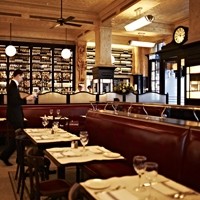
“Balthazar at one end of the scale at 10,000sq.ft is paying one rent. At the other end, if you are an entrepreneur and you are starting out, literally on a barrel in a food market, and you go into one of the units on the lower ground floor in the market building, you are paying 30k or 40k a year in rent,” she explained.
Vibrant
The changes to Covent Garden’s dining offer are not at an end – Churchill has more cards up her sleeve for 2013 and beyond as Capco plans to plough more funds into the area.
“We are working really hard on securing another concept for another big anchor site to balance out Balthazar on another one of the corner units of the Piazza.”
“It has long been my ambition to have the place to go to for whatever meal occasion of the day you happen to be thinking about,” she said.
Unsurprisingly, Churchill believes the 1 million sq.ft estate is large and vibrant enough to hold the different offers but what about the operators?
Paul is not concerned about new players joining Christopher’s in Covent Garden.
“Not at all,” she said. “Christopher’s is so unique and our offering is different. All the big names in the area have a niche.”
